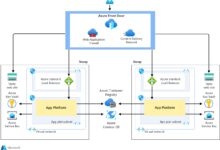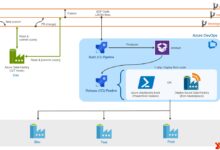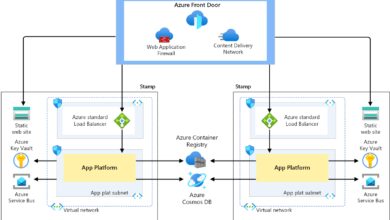Calculate Azure Costs: 7 Powerful Strategies to Master Your Cloud Spending
Want to calculate Azure costs accurately and avoid bill shock? You’re not alone. With Microsoft Azure’s vast array of services, tracking and predicting expenses can feel overwhelming. But with the right tools and strategies, you can gain full control over your cloud budget—starting today.
Why You Need to Calculate Azure Costs Strategically

Understanding your cloud spending isn’t just about saving money—it’s about making smarter business decisions. When you calculate Azure costs effectively, you gain visibility into resource usage, identify waste, and align your IT spending with business goals. Without this insight, companies often overspend by 30% or more due to idle resources, misconfigured services, or lack of governance.
The Hidden Dangers of Unmanaged Azure Spending
Many organizations fall into the trap of assuming cloud costs are predictable. In reality, Azure’s pay-as-you-go model can lead to unexpected spikes. A single misconfigured virtual machine left running over the weekend can cost hundreds of dollars. Multiply that across dozens of developers, and the numbers add up fast.
- Orphaned disks and unattached storage accounts continue to accrue charges.
- Development environments left running 24/7 instead of being scheduled.
- Over-provisioned VMs running at low utilization rates.
“The biggest cost in the cloud isn’t the service—it’s the lack of visibility.” — Cloud Economics Expert, Microsoft Ignite 2023
Business Impact of Poor Cost Management
When teams can’t calculate Azure costs accurately, it affects more than just the finance department. It impacts agility, innovation, and trust in cloud adoption. Departments may be denied resources due to budget overruns, or worse—shadow IT emerges as teams bypass approval processes to get work done.
By implementing a structured approach to calculate Azure costs, organizations can shift from reactive firefighting to proactive planning, enabling faster innovation while staying within budget.
How to Calculate Azure Costs: Core Components Explained
To calculate Azure costs accurately, you must first understand the building blocks of Azure pricing. Every service has its own pricing model, and costs are influenced by factors like region, instance type, data transfer, and usage duration.
Compute: The Heart of Your Azure Bill
Virtual Machines (VMs) are often the largest cost driver in Azure. Whether you’re using Windows or Linux VMs, pricing depends on:
- VM size (CPU, memory, GPU)
- Usage type (Dev/Test vs. Production)
- Operating system licensing
- Availability zones and sets
For example, an East US region D4s v3 VM costs approximately $0.192/hour on pay-as-you-go. Running it 24/7 for a month (730 hours) totals about $140. But if you use Reserved VM Instances, you can save up to 72%.
Storage: Don’t Overlook the Silent Cost Driver
Storage seems cheap—until you’re storing terabytes of data across multiple redundancy types. Azure offers several storage tiers:
- Hot (frequent access)
- Cool (infrequent access)
- Archive (rare access)
Moving data to the right tier can cut storage costs by up to 90%. For instance, archiving old backups instead of keeping them in hot storage can save thousands annually. Always factor in transaction costs, which are often overlooked when you calculate Azure costs.
Networking and Data Transfer: The Invisible Charges
Data egress (data leaving Azure) is one of the most misunderstood cost elements. While inbound data is free, outbound data is charged per gigabyte. Transferring 1TB of data from Azure to the internet in North America costs around $90. Inter-region transfers (e.g., from West US to East US) also incur fees.
Using Azure Peering or Content Delivery Network (CDN) can reduce these costs significantly. Always include networking in your model when you calculate Azure costs.
Top Tools to Calculate Azure Costs Accurately
Microsoft provides several native tools to help you calculate Azure costs. These are essential for real-time monitoring, forecasting, and optimization.
Azure Pricing Calculator: Plan Before You Spend
The Azure Pricing Calculator is your first stop when estimating costs. It allows you to build a virtual environment by selecting services, regions, and configurations. You can save and share estimates with stakeholders.
- Real-time cost estimation as you add services
- Supports most Azure services including VMs, databases, networking, and AI
- Export estimates to PDF or Excel for reporting
This tool is ideal for planning new projects or migrating on-premises workloads to the cloud. However, it doesn’t reflect actual usage—it’s a projection tool.
Azure Cost Management + Billing: Track Real Usage
Once resources are deployed, Azure Cost Management becomes your go-to dashboard. It provides:
- Detailed cost breakdown by service, resource group, or tag
- Daily and monthly spending trends
- Forecasting based on historical usage
- Custom alerts for budget thresholds
You can drill down into specific subscriptions and even allocate costs to departments using tags. This is critical when you need to calculate Azure costs across multiple teams or business units.
Third-Party Tools for Advanced Cost Optimization
While Azure’s native tools are powerful, third-party solutions offer deeper insights and automation. Tools like CloudHealth by VMware, Datadog Cloud Cost Management, and Spot by NetApp provide:
- Multi-cloud cost visibility (Azure, AWS, GCP)
- Automated rightsizing recommendations
- Carbon footprint tracking
- Integration with CI/CD pipelines
These tools often use machine learning to predict future spend and identify anomalies, making them ideal for enterprises that need to calculate Azure costs at scale.
Step-by-Step Guide to Calculate Azure Costs
Let’s walk through a practical example of how to calculate Azure costs for a typical web application hosted on Azure.
Step 1: Define Your Architecture
Assume your app uses:
- 2x Standard_D2s_v3 VMs (Load-balanced, 8GB RAM, 2 vCPUs)
- 1x Azure SQL Database (Standard Tier, 50 DTUs)
- 100GB Blob Storage (Hot Tier)
- 10TB Monthly Data Egress
- Application Gateway for routing
All resources are in the East US region.
Step 2: Use the Azure Pricing Calculator
Visit Azure Pricing Calculator and add each service:
- VMs: $0.192/hour x 2 = $0.384/hour → ~$280/month
- SQL Database: ~$150/month
- Blob Storage: ~$23/month
- Data Egress: 10TB x $0.09/GB = $900/month
- Application Gateway: ~$100/month
Total estimated monthly cost: ~$1,453
Step 3: Apply Discounts and Optimizations
Now optimize:
- Reserve VMs for 1 year: Save 45% → $280 → $154
- Use Reserved SQL Database: Save 30% → $150 → $105
- Reduce egress with CDN: Save 60% → $900 → $360
- Move 50GB to Cool Storage: Save 50% on that portion
Optimized total: ~$750/month — a 48% reduction just by planning ahead.
Best Practices to Reduce Azure Costs
Once you can calculate Azure costs, the next step is reducing them without sacrificing performance.
Implement Tagging and Cost Allocation
Tags are metadata (like ‘Environment=Prod’ or ‘Owner=Marketing’) that let you categorize resources. When you calculate Azure costs by tag, you can:
- Assign costs to departments
- Identify unused resources (e.g., ‘Temp’ or ‘Deprecated’)
- Enforce governance policies
Without tagging, cost allocation becomes guesswork. Make tagging mandatory during resource creation.
Use Auto-Shutdown and Scheduling
Development and testing environments don’t need to run 24/7. Use Azure Automation or DevTest Labs to shut down VMs outside business hours.
Example: A dev VM running only 40 hours/week instead of 168 saves ~76% in compute costs. Multiply that across 20 dev VMs, and you save thousands per year.
Leverage Spot VMs for Fault-Tolerant Workloads
Spot VMs offer up to 90% discount on unused Azure capacity. They can be evicted with 30 seconds’ notice, so they’re perfect for:
- Batch processing
- CI/CD pipelines
- Big data analytics
By using Spot VMs for non-critical workloads, you can drastically reduce costs while maintaining performance.
Common Mistakes When Trying to Calculate Azure Costs
Even experienced teams make errors when estimating or managing Azure spending.
Ignoring Idle and Orphaned Resources
One of the biggest cost leaks is idle resources. A VM with 5% CPU utilization for weeks is a prime candidate for downsizing. Similarly, unattached disks and unused public IPs continue to charge.
Solution: Run weekly reports in Azure Cost Management to identify low-usage resources. Set up automated cleanup scripts using Azure Functions.
Overlooking Data Transfer Fees
Many teams focus on VM and storage costs but forget that moving data between regions or out of Azure adds up. A 10TB monthly egress might seem small, but at $90/TB, that’s $900/month.
Solution: Use Azure Traffic Manager and CDN to reduce egress. Monitor data transfer in Cost Analysis reports.
Failing to Use Reservations
Reserved Instances (RIs) offer massive savings for predictable workloads. Yet, many organizations don’t use them due to complexity or fear of commitment.
Solution: Start with 1-year reservations for critical VMs and databases. Use Azure’s RI recommendation engine to identify savings opportunities.
Advanced Strategies to Master Azure Cost Management
For enterprises, calculating Azure costs isn’t a one-time task—it’s an ongoing discipline.
Implement FinOps Practices
FinOps (Cloud Financial Management) is a cultural and operational shift that brings finance, engineering, and business teams together to manage cloud costs.
- Establish a FinOps team or champion
- Run monthly cloud cost reviews
- Create chargeback/showback models
Organizations that adopt FinOps report 20-30% cost savings within the first year.
Use Azure Advisor for Continuous Optimization
Azure Advisor is a free tool that analyzes your environment and provides personalized recommendations.
- Identifies underutilized VMs
- Suggests reserved instance purchases
- Recommends security and reliability improvements
Enable Advisor and review its suggestions weekly. It’s one of the easiest ways to continuously improve your ability to calculate Azure costs accurately.
Forecast and Budget with Precision
Azure Cost Management allows you to set budgets with alert thresholds (e.g., 80%, 90%, 100% of budget).
- Create budgets by subscription, resource group, or tag
- Receive email or webhook alerts
- Integrate with Power BI for advanced reporting
Proactive budgeting prevents surprises and helps you calculate Azure costs with greater confidence.
How do I calculate my Azure bill?
You can calculate your Azure bill using the Azure Pricing Calculator for estimates, or Azure Cost Management + Billing for actual usage. Include compute, storage, networking, and data transfer costs. Apply discounts like Reserved Instances and use tagging for accurate allocation.
What is the best tool to calculate Azure costs?
The best tool to calculate Azure costs is the Azure Pricing Calculator for planning, and Azure Cost Management for real-time tracking. For enterprises, third-party tools like CloudHealth or Spot offer advanced analytics.
How can I reduce my Azure cloud costs?
You can reduce Azure costs by using Reserved Instances, shutting down unused VMs, moving data to cooler storage tiers, using Spot VMs, and implementing tagging and budget alerts. Regularly review Azure Advisor recommendations for optimization.
Does Azure have a cost management tool?
Yes, Azure has a built-in cost management tool called Azure Cost Management + Billing. It provides detailed cost analysis, forecasting, budgeting, and alerts. It integrates with all Azure services and supports multi-account consolidation.
What are common Azure cost mistakes?
Common Azure cost mistakes include leaving VMs running 24/7, ignoring data egress fees, not using reservations, failing to tag resources, and storing data in the wrong tier. Regular audits and automation can prevent these.
Being able to calculate Azure costs accurately is no longer optional—it’s a business imperative. With the right tools, strategies, and discipline, you can turn cloud spending from a cost center into a strategic advantage. Start by using the Azure Pricing Calculator, implement Cost Management, adopt FinOps practices, and continuously optimize. The cloud should empower innovation, not drain your budget. Take control today and make every dollar count.
Recommended for you 👇
Further Reading:









